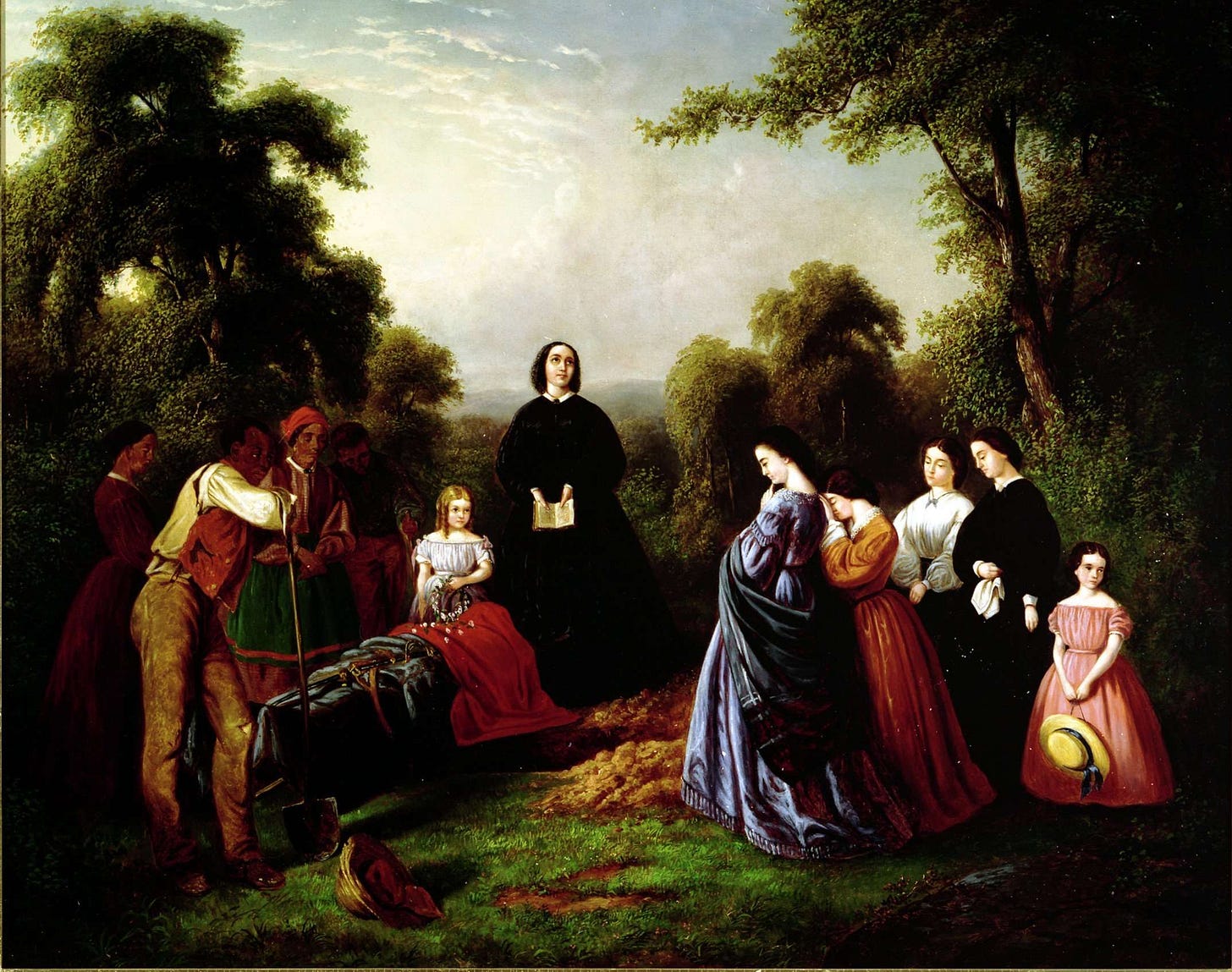The Lost Cause
Recusants, Cavaliers, Jacobites, Loyalists, Confederates

Furl that Banner! True, 'tis gory,
Yet 'tis wreathed around with glory,
And 'twill live in song and story,
Though its folds are in the dust;
For its fame on brightest pages,
Penned by poets and by sages,
Shall go sounding down the ages—
Furl its folds though now we must.
Furl that banner, softly, slowly!
Treat it gently—it is holy—
For it droops above the dead.
Touch it not—unfold it never,
Let it droop there, furled forever,
For its people's hopes are dead!
—Fr. Abram Ryan, “The Conquered Banner.”
Now a' is done that men can do,
And a' is done in vain!
My love, and native land, fareweel!
For I maun cross the main,
My dear,
For I maun cross the main.
…
When day is gone and night is come,
And a' folk bound to sleep,
I think on him that's far awa
The lee-lang night, and weep,
My dear,
The lee-lang night, and weep.
—Robert Burns, “It Was a’ for Our Rightful King.”
Recently I was at a wedding in Greenville, South Carolina – a part of the Palmetto State where I had never ventured before, Charleston being pretty much the only city there in which I had spent much time. I took the opportunity to visit the Museum and Library of the Confederacy in that town, run by the local chapter of the Sons of Confederate Veterans. The two gentlemen staffing the collection were welcoming and friendly, as well as knowledgeable about the collection. The pictures, weapons, banners, uniforms, and the like were preserved and displayed, and I can happily say it was an hour or so very well spent.
Of course, the very existence of such a museum, with its subject presented in a positive light, is now an intense source of controversy. I can remember when it was not so. In the earliest years of my memory, the Civil War Centennial was still going on – in the midst of the Civil Rights Era – and the emphasis was on the bravery of both sides in the bloodiest conflict Americans ever fought. After all, more of us died in that conflict than all the others combined – and many of us were civilians. Yet, despite Reconstruction and its legitimate son, Jim Crow, in 50 years’ time, the surviving elderly Confederate Veterans relived Pickett’s Charge by running down the hill literally into the arms of surviving Union Veterans. This national reconciliation after such a horrible conflict is perhaps without parallel in Western history, and were we a sane people, would rank as one of our greatest achievements – if not indeed our greatest. In other nations, it would be an endlessly bleeding wound, like Ulster.
A key ingredient in this incredible accomplishment was permitting each side to honour its heroes, and not to find fault and blame. But in recent years, the will to power on the part of the criminally stupid – never a negligible element amongst any political class – has led to a reopening of the old wounds. Physically represented by physical attacks on and removals of Confederate memorials and monuments, it is accompanied by – for want of a better word – intellectual attacks on what is characterised as “The Myth of the Lost Cause.” This is defined by Wikipedia, source of all truth, thusly: “The Lost Cause of the Confederacy, known simply as the Lost Cause or the Lost Cause Myth, is an American pseudo-historical and historical negationist myth that argues the cause of the Confederate States during the American Civil War was just, heroic, and not centered on slavery. First articulated in 1866, it has continued to influence racism, gender roles, and religious attitudes in the Southern United States into the 21st century.” There is a lot of stupidity to unpack here. But before I do, I must in the interests of transparency make two admissions. The first is that my great great-grandfather, Frederic Coulombe, left his home in Rimouski, Quebec, and went to Lincoln, Maine, to enlist in the 9th Maine Volunteer Infantry in June of 1861. Present at Gettysburg, Spotsylvania Courthouse, and the Wilderness, he was severely wounded at Malvern Hill, and was a POW for a time; I am not eligible to join the SCV. Secondly, I share the view of such scholars as Kevin Phillips, who, in his The Cousins’ Wars, sees what was really our second civil war in what are now the United States as the last in a related series of conflicts that saw the transition of the Anglosphere from a remote kingdom at the edge of Christendom to a global goliath. The Confederate was only the last in a series of “Lost Causes,” the victory of any one of which might well have changed human history for the better.

